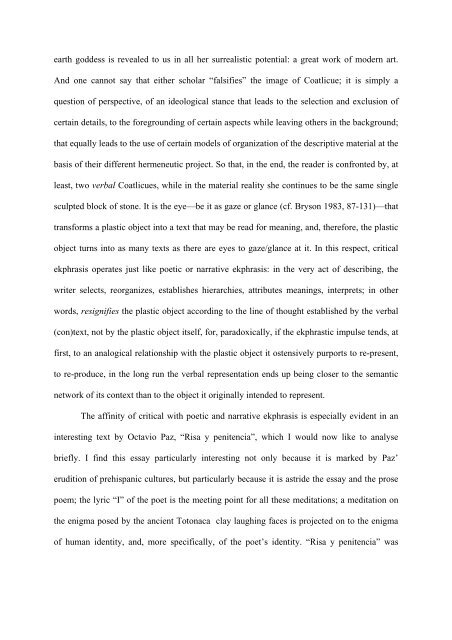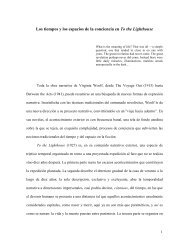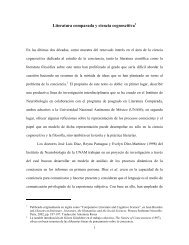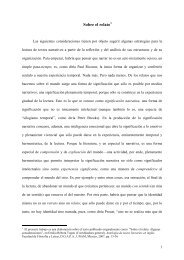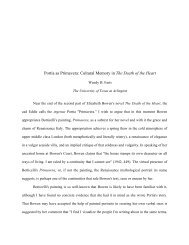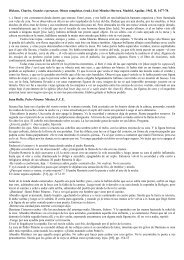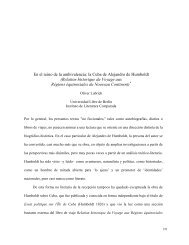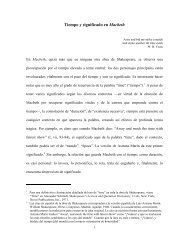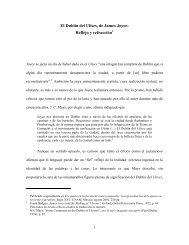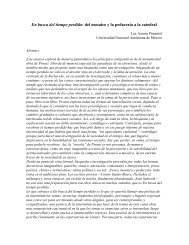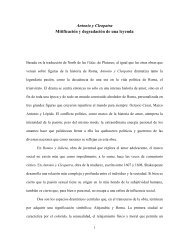Risa y penitencia - Luz Aurora Pimentel
Risa y penitencia - Luz Aurora Pimentel
Risa y penitencia - Luz Aurora Pimentel
- No tags were found...
Create successful ePaper yourself
Turn your PDF publications into a flip-book with our unique Google optimized e-Paper software.
earth goddess is revealed to us in all her surrealistic potential: a great work of modern art.And one cannot say that either scholar “falsifies” the image of Coatlicue; it is simply aquestion of perspective, of an ideological stance that leads to the selection and exclusion ofcertain details, to the foregrounding of certain aspects while leaving others in the background;that equally leads to the use of certain models of organization of the descriptive material at thebasis of their different hermeneutic project. So that, in the end, the reader is confronted by, atleast, two verbal Coatlicues, while in the material reality she continues to be the same singlesculpted block of stone. It is the eye—be it as gaze or glance (cf. Bryson 1983, 87-131)—thattransforms a plastic object into a text that may be read for meaning, and, therefore, the plasticobject turns into as many texts as there are eyes to gaze/glance at it. In this respect, criticalekphrasis operates just like poetic or narrative ekphrasis: in the very act of describing, thewriter selects, reorganizes, establishes hierarchies, attributes meanings, interprets; in otherwords, resignifies the plastic object according to the line of thought established by the verbal(con)text, not by the plastic object itself, for, paradoxically, if the ekphrastic impulse tends, atfirst, to an analogical relationship with the plastic object it ostensively purports to re-present,to re-produce, in the long run the verbal representation ends up being closer to the semanticnetwork of its context than to the object it originally intended to represent.The affinity of critical with poetic and narrative ekphrasis is especially evident in aninteresting text by Octavio Paz, “<strong>Risa</strong> y <strong>penitencia</strong>”, which I would now like to analysebriefly. I find this essay particularly interesting not only because it is marked by Paz’erudition of prehispanic cultures, but particularly because it is astride the essay and the prosepoem; the lyric “I” of the poet is the meeting point for all these meditations; a meditation onthe enigma posed by the ancient Totonaca clay laughing faces is projected on to the enigmaof human identity, and, more specifically, of the poet’s identity. “<strong>Risa</strong> y <strong>penitencia</strong>” was


